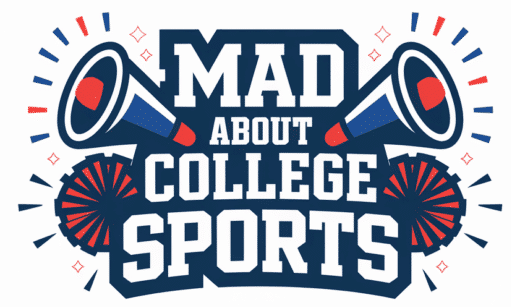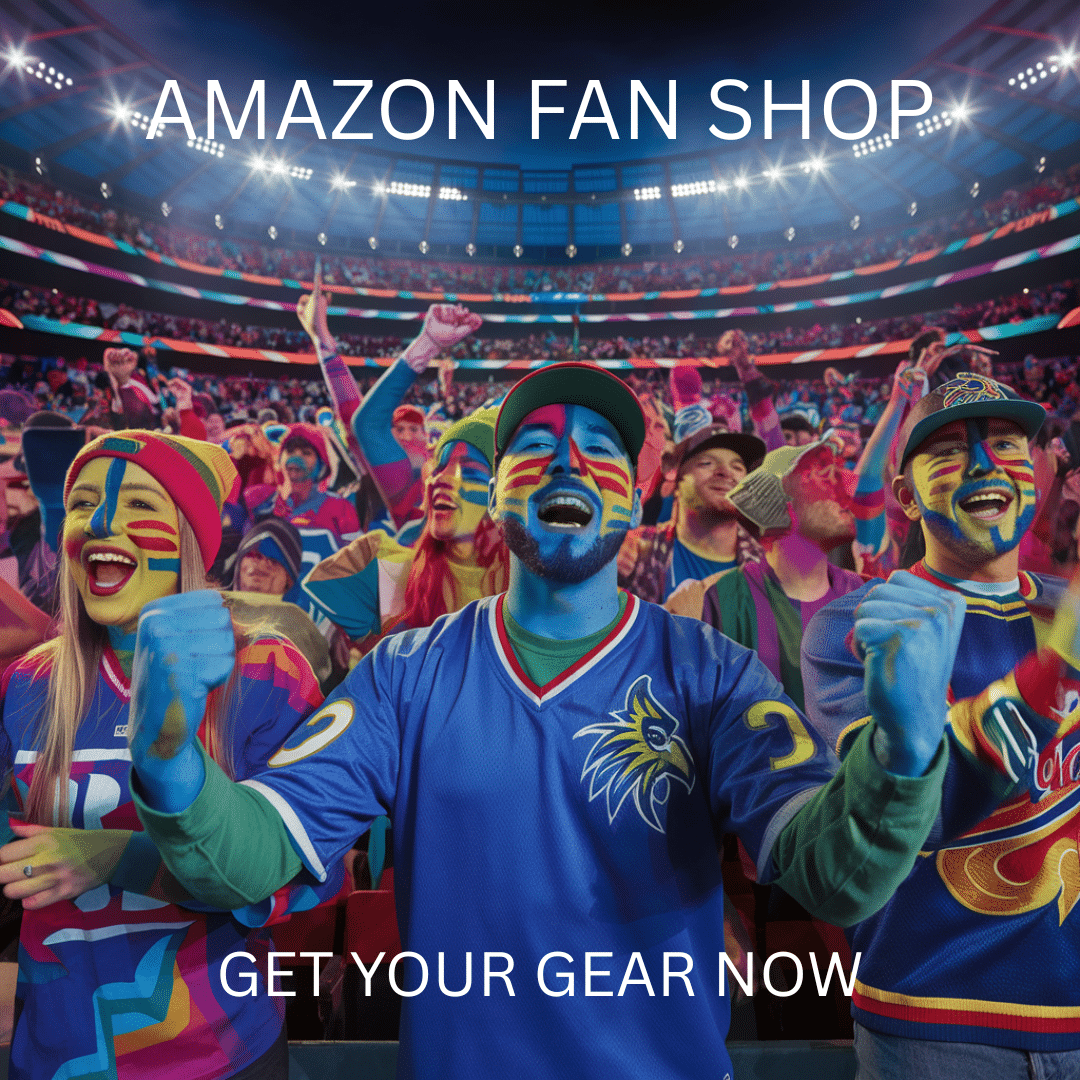How is NIL Money Paid Out? A Clear Guide to Payment and Distribution Methods
NIL money for college athletes usually comes from deals with outside businesses, sponsors, or collectives that want to use an athlete’s name, image, or likeness for advertising or endorsements. Since NCAA rules changed in 2021, student-athletes can now profit from their personal brands, opening the door for new kinds of contracts, sponsorships, and social media partnerships in college sports.
The process often begins when companies or collectives reach out with offers or deals. They negotiate terms directly with athletes, and payouts might be one-time payments, ongoing salaries, or bonuses tied to performance.
Payment methods vary. Sometimes it’s a direct bank transfer, other times it’s a check or a digital payment app. The money comes from outside the universities, not from athletic departments.
If you want to dig deeper into where the money originates, here’s a guide to NIL money sources.
Since NIL rules took effect, thousands of student-athletes have earned money through different opportunities. The size of these payouts depends a lot on the athlete’s popularity, sport, and school.
Contents
What Is NIL Money?
NIL money is what student-athletes get paid for letting companies or people use their name, image, and likeness. It’s not a salary for playing, but it does give athletes a way to make money from personal branding while in college.
Definition of Name, Image, and Likeness
Name, image, and likeness (NIL) refers to the right people have to control how their identity gets used for endorsements, sponsorships, or appearances. In college sports, this means student-athletes can get paid when their face, name, or reputation is used in marketing or ads.
This might be a social media post, a commercial, signing autographs, or even being featured in a video game. NIL money comes from business deals, not from the school.
Companies or individuals pay athletes to use their identity for commercial purposes. The legal change in 2021 was a big deal—before then, athletes couldn’t earn anything this way.
Now, college athletes can start building their brands early and chase opportunities that used to be reserved for pros. Want a quick primer? Check out ESPN’s NIL explainer.
Difference Between NIL and Athlete Compensation
NIL money isn’t the same as the direct salary that pro athletes get for playing. Student-athletes still don’t get paid by their schools just for playing in games or going to practice.
Scholarships—covering tuition, room, and board—are separate from NIL deals.
The main thing is, NIL deals are private contracts with brands, local businesses, or sometimes even fans. The school usually isn’t the one paying out NIL money, though some schools help athletes find opportunities.
NIL is all about the commercial use of a student’s persona, not pay-for-play. This keeps a line between college sports and pro leagues. If you want more details, Icon Source’s NIL guide does a solid job explaining it.
NIL Rights and Eligibility
To qualify for NIL deals, student-athletes have to follow NCAA and state rules. Every college athlete at an NCAA school—no matter the sport or scholarship status—can usually sign NIL agreements, but they have to report their deals to the school and sometimes get approval.
International athletes often face more restrictions because of visa rules. Not all NIL deals pay the same. Some athletes make a few hundred bucks, while big names can land six- or seven-figure contracts.
Common NIL activities include social media promos, event appearances, selling merch, or running sports camps.
Table: Common NIL Activity Types and Estimated Earnings
| NIL Activity | Typical Earnings |
|---|---|
| Social media post | $50 – $10,000+ |
| Attending an event | $500 – $5,000+ |
| Autograph signing | $250 – $5,000+ |
| Endorsement deal | $1,000 – $50,000+ |
Athletes need to steer clear of activities that break team rules or clash with existing school sponsors. CBH’s NIL overview has more on rights and eligibility.
Key Players in NIL Payouts
A handful of groups really drive NIL money in college sports. Each one plays a different role in how deals work, how payments reach student-athletes, and how all this shapes college athletics.
Student Athletes and Student-Athletes
Student athletes now have the legal right to profit from their own name, image, and likeness, or NIL. This lets them sign sponsorship deals, make money from social media, run private camps, or show up in commercials.
Most NIL deals happen between the student-athlete and a brand, or through a third-party platform that matches athletes with companies. Payouts might be direct payments, product deals, or performance bonuses.
Earnings run the gamut—from a few hundred bucks for lesser-known athletes, to thousands or even millions for the big stars in major sports. Contracts spell out the pay, rights, and duties.
Student-athletes have to report their NIL earnings to the college’s compliance office to stay on the right side of NCAA and school rules.
| Deal Type | Avg. Earnings (per deal) |
|---|---|
| Social Media Posts | $50 – $2,500 |
| Appearances/Camps | $500 – $10,000 |
| Sponsorships/Brands | $1,000 – $50,000+ |
Colleges and Athletic Departments
Colleges and athletic departments can’t pay athletes directly for playing, but they do offer guidance and support. Staff might review contracts, help student-athletes with tax questions, and make sure everything follows NCAA and school policies.
Schools often use platforms to connect athletes with opportunities, but they can’t broker deals themselves. Education’s a big part of it, too.
Many colleges run workshops or bring in advisors to teach athletes about contracts, taxes, and branding. They want every deal to be compliant, safe, and above board.
NIL Collectives and Sponsorships
NIL collectives are independent groups, usually started by boosters, businesses, or supporters of a college sports program. Their main job is to raise money and organize NIL opportunities for student-athletes.
These collectives pool funds from fans, donors, or companies and distribute them through approved deals or sponsorships. Payouts can be for appearances, endorsements, or even charity work, as long as everything stays within NCAA rules.
Sponsorships come straight from brands or local businesses. They’re handled through contracts between the sponsor and the athlete.
These groups don’t just focus on football and basketball—they often help athletes in all sports. If you want to see how money flows through these groups, check out more details on NIL collectives and sponsorships.
Types of NIL Compensation
NIL compensation is changing how college athletes earn money. The most common types include endorsements, sponsorship deals, revenue sharing, and personal contracts.
Endorsement Opportunities
Endorsement opportunities let athletes make money by promoting products or services. Companies usually want players with big social media followings or strong local reputations to boost their brand.
Athletes might post on Instagram or show up in commercials. They can earn endorsements from all sorts of businesses—sportswear brands, restaurants, tech companies, you name it.
Some deals are short-term, others run for a whole season. Sometimes it’s paid per post, sometimes it’s tied to performance or engagement.
For example, an athlete with a loyal online following might get paid by a clothing company to wear their gear in photos. Some deals include free products along with cash.
| Type of Endorsement | Example Brands | Typical Payout (Range) |
|---|---|---|
| Social Media Post | Athletic brands | $500 – $5,000/post |
| Event Appearance | Local businesses | $250 – $3,000/appearance |
| Commercial Spot | Regional companies | $1,000 – $20,000+ |
Sponsorships and Endorsement Deals
Sponsorships are formal agreements between athletes and companies. The athlete represents a brand in a bigger way—not just a one-off promo.
These deals often include appearances, campaigns, and steady social media support. Brands like car dealerships, tech companies, and national sportswear labels look for athletes to partner with long-term.
Endorsement deals might require exclusivity, meaning the athlete can only promote one brand in a certain category. Companies usually pay a fixed sum or split payments over the contract term.
Some athletes also get bonuses for hitting milestones or performing well on the field. Sponsorship and endorsement deals are a major part of NIL compensation, providing steady income and perks like merchandise, training, or travel.
The value of these deals depends on the athlete’s profile and the sponsor’s reach.
Revenue Sharing Model
The revenue sharing model is a newer idea in the NIL world. Some schools and conferences are talking about sharing a slice of their media or ticket revenue with athletes.
In this setup, student-athletes get paid based on the money their team or conference brings in. The payout structure varies, but the goal is to give athletes a share of the financial success they help create.
This isn’t like sponsorships or individual deals—it works more like a group benefit. The details are still being worked out, and the final structure will depend on NCAA rules and future legal changes.
NIL Contracts
NIL contracts lay out the rules for how athletes get paid. These agreements are legally binding and cover stuff like payment amount, schedule, obligations, and how long the partnership lasts.
Most contracts require athletes to do specific things—posts, appearances, interviews, etc. They might include brand exclusivity clauses, rules about what happens if an athlete transfers, and when payments are due.
Athletes often work with agents or lawyers to review these deals. Contracts help protect both sides, so everyone knows what’s expected.
A lot of contracts also require athletes to follow school and league rules, so they don’t run into eligibility issues.
The Process of NIL Money Distribution
NIL money for college athletes flows through a system of direct contracts, varied payment methods, and unique approaches at different schools. How athletes get paid depends on who’s writing the check, what’s in the agreement, and how each college sports program handles revenue.
Structuring NIL Deals
Athletes usually set up NIL deals with brands, local businesses, or NIL collectives. Each contract spells out the basics: what the athlete will do, how much they’ll get, and when.
Most agreements are written. Sometimes, smaller deals are just verbal.
Key contract details often include:
- Payment amounts
- Marketing or promotional expectations
- Duration (one-time or ongoing)
- Rights to use an athlete’s name, image, or likeness
NIL collectives matter a lot—they pool donor money and organize payments that follow the rules. These groups help athletes and schools stay on the right side of NCAA rules and state laws. Check out this guide to NIL collectives if you want more detail.
Payment Methods and Timelines
Athletes usually get paid by direct deposit, check, or through third-party platforms. The sponsor or collective picks the method, and big deals sometimes use different systems than small ones.
Payments might come as:
- One-time lump sum (maybe for a quick commercial)
- Installments (monthly or quarterly for longer campaigns)
- Performance-based payouts (when certain goals are met)
A 2024 On3 Sports survey found about 70% of athletes got paid within 30 days of finishing their end of the deal.
| Payment Method | Percentage of NIL Deals |
|---|---|
| Direct Deposit | 55% |
| Third-Party Platforms | 30% |
| Check | 15% |
Most contracts set payment timelines, but things can run late if work isn’t finished on time.
Revenue Distribution in College Athletics
NIL money comes from sponsors, local businesses, brands, or alumni-backed collectives—not from athletic departments or conferences. This keeps athlete payments separate from official NCAA revenue streams. Curious where the money starts? Here’s more on where NIL money comes from.
Athlete earnings depend on their marketability, sport, and location. Football and basketball stars often get the biggest deals, while athletes in less-followed sports might see less.
Schools can offer education or resources, but they don’t pay athletes for NIL work. That separation matters for NCAA compliance and avoiding pay-for-play messes.
Legal Framework Impacting NIL Payment
Several legal rules shape how college athletes get paid for their name, image, and likeness. These rules aim to keep things fair, prevent discrimination, and set boundaries everyone has to follow.
NCAA Policies and Title IX
The NCAA’s 2021 interim policy opened the door for athletes to make money from NIL. Still, it bans pay-for-play and improper recruiting perks.
Colleges have to keep an eye on NIL activity to avoid breaking NCAA rules. Penalties can hit both the school and the athlete if they slip up. More on the latest NCAA updates here: NIL rules.
Title IX bans sex-based discrimination in education. Schools must make sure NIL deals and support are available to all athletes, regardless of gender. If they help male athletes get deals, they need to do the same for female athletes.
| Policy | Focus | Requirement |
|---|---|---|
| NCAA NIL Rules | Athlete compensation | Cannot pay for athletic performance |
| Title IX | Gender equity | Fair access for male & female athletes |
Antitrust Laws and the Sherman Antitrust Act
Antitrust laws, especially the Sherman Antitrust Act, limit how the NCAA and schools can restrict athletes’ earning power. Courts have decided that strict amateurism rules sometimes hurt athletes’ rights to profit.
Legal challenges have pushed the NCAA to change its NIL policies. Many court cases focus on whether limits to athlete compensation break antitrust law. The main goal is to stop the NCAA from unfairly blocking athletes from earning NIL money. You can dig deeper into the legal battles at this college athlete NIL litigation FAQ.
Recent Changes and Notable Settlements
Rules for NIL payments have shifted quickly in just a few years. Lawsuits and settlements have forced big changes in how money moves in college sports.
2021 Regulations and the NCAA
In July 2021, the NCAA finally allowed athletes to profit from their name, image, and likeness. Before that, strict rules kept college athletes from accepting money or gifts tied to their sports fame.
Now, athletes can sign endorsement deals, partner with brands, get paid for autographs, or make money from social media posts. There are still some limits, like bans on promoting certain products and state or school-specific rules.
Key changes since 2021:
- Athletes can sign with agents for NIL business.
- Most states have their own NIL laws, but the NCAA allows NIL deals everywhere.
- Colleges can’t pay athletes directly, but they sometimes help them connect with companies and sponsors.
Athletes at every level started landing personal deals and group licensing agreements. College sports marketing just isn’t the same anymore.
House Settlement and Antitrust Cases
The “House v. NCAA” case was a game-changer. Athletes claimed the NCAA’s rules kept them from earning what they deserved. This lawsuit was part of a wave challenging how college sports limit athlete pay.
In May 2024, the NCAA agreed to settle the House case for more than $2.7 billion. The deal covered backpay and forced revenue sharing for athletes. After years of legal fights, players will now get a direct cut of college sports money.
| Year | Case Name | Settlement Amount | Key Impact |
|---|---|---|---|
| 2021 | Alston v. NCAA | Not monetary | Ruled against NCAA limits |
| 2024 | House v. NCAA | $2.7 billion | Revenue sharing, backpay |
These cases forced the NCAA and conferences to rethink how they share revenue with athletes, especially in football and basketball.
Settlement Agreements in College Sports
Settlements are now shaping how NIL and direct payments will work going forward. The NCAA’s agreement with athletes affects both NIL money and future revenue sharing.
Under these settlements, money gets distributed as:
- Backpay for athletes who missed out in the past.
- Ongoing payments and possibly a share of broadcasting or sponsorship revenue for current and future athletes.
These deals aim to give athletes more control over their own likeness and income. The details aren’t all ironed out yet, but college sports finances are moving toward more transparency and direct athlete benefits.
Withholding, Taxes, and Compliance Issues
College athletes making money from NIL deals have to handle taxes and compliance headaches. The process of getting paid, reporting income, and keeping up with the rules isn’t always simple. Even small mistakes can mean penalties or loss of eligibility.
Understanding Withholding Requirements
Most NIL payments come with no automatic tax withholding. Athletes usually get the full payment, with no taxes, Social Security, or Medicare taken out. That means it’s on them to pay all taxes owed, unlike regular employees.
For bigger or recurring deals, athletes might fill out a W-9 form. Payments usually get documented with a 1099 at tax time. If athletes skip estimated tax payments during the year, the IRS could hit them with penalties.
| Payment Method | Taxes Withheld? | Forms Given |
|---|---|---|
| Check or Direct Deposit | No | W-9, 1099-NEC |
| Payroll (rare) | Sometimes | W-2 |
Reporting NIL Income
The IRS considers NIL money taxable. That includes cash, equipment, event fees, and even some gifts from sponsors. Every bit of NIL earnings needs to be reported—not just the big endorsement checks.
Athletes should track every payment and keep solid records. This helps with audits and avoids missing income. NIL money usually counts as self-employment income, so athletes may owe both income and self-employment taxes.
If athletes don’t report NIL income correctly, they could get fined. For high earners, it’s smart to hire a tax pro who understands NIL and tax laws.
Ensuring Compliance with NCAA and Federal Rules
NCAA rules let athletes profit from their name, image, and likeness, but only if payments follow the guidelines. The pay has to be for real work or actual value, not just an incentive to attend a certain school.
Payments need to be genuine and fair-market, with contracts and documentation to prove it. Both athletes and sponsors have to watch for conflicts of interest or anything that breaks state or NCAA rules.
The IRS or state tax authorities might audit athletes if records are messy. If athletes ignore federal or NCAA compensation rules, they could lose eligibility or face tax problems. Schools often offer compliance training, but at the end of the day, it’s up to the athlete to follow all NIL income and compensation rules.
Challenges in NIL Money Payment
NIL money payments come with a lot of headaches, from legal disputes to questions about the future of amateurism. Changing rules and spotty enforcement leave athletes and schools confused.
Legal Challenges and Ongoing Litigation
The legal world around NIL is still a moving target. Court cases and new state laws keep shifting how athletes can profit from their name, image, and likeness.
Some schools worry about breaking NCAA rules. Others have to follow new state regulations.
Lawsuits between coaches, schools, and athletes happen more often than you’d think. These battles can slow or freeze payments. Unclear rules about which deals are allowed make it risky for athletes and businesses to sign contracts.
Here’s a quick look at the rise in NIL-related lawsuits:
| Year | NIL Lawsuits Filed | States Involved |
|---|---|---|
| 2021 | 8 | 6 |
| 2022 | 15 | 13 |
| 2023 | 21 | 17 |
As long as the rules keep changing, more lawsuits and disputes will pop up. The NIL process isn’t easy to navigate for anyone right now. For more on the shifting legal environment, see ESPN NIL Explainer.
Impacts on Amateurism in College Sports
NIL has totally shaken up how we look at amateurism in college athletics. For decades, college athletes couldn’t make money from sports.
Now, with NIL in play, that line’s honestly a lot blurrier. Some folks say the new system finally supports athletes’ rights. Others can’t help but worry it’s turning college sports into just another business.
Coaches and athletic directors have to juggle teams with both paid and unpaid athletes. It gets awkward, especially when a few players rake in way more than their teammates. This gap in payment has sparked tension, as discussions of payment packages point out.
The whole idea of student-athletes as amateurs keeps shifting. Some fans argue college sports are losing their soul, but others are glad to see athletes finally get something back for all their effort.






